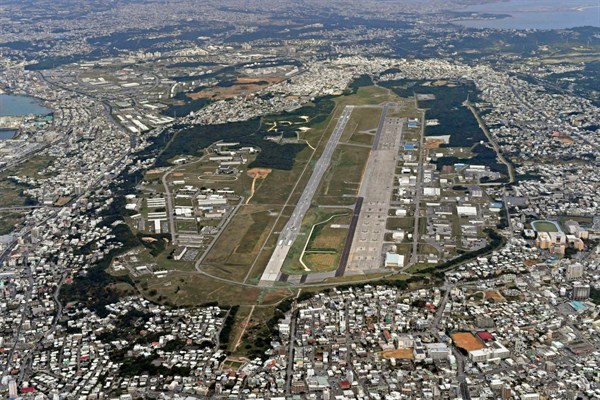On Sept. 30, residents of Okinawa, Japan’s southernmost prefecture, were busy with an almost ritualistic activity this time of year: cleaning up after a tropical storm. Typhoon Trami had struck the day before, causing dozens of injuries, power outages and transportation disruptions. But this year, Okinawans had something else on their minds beyond the recovery efforts. They were preparing to go to the polls to elect their next governor.
The election, initially scheduled for November, had been moved up due to the death of Gov. Takeshi Onaga in August, from pancreatic cancer. Onaga was a staunch opponent of a contentious plan to relocate part of a United States military base on Okinawa’s main island from the center of a crowded city to a more sparsely populated area. The election to replace him quickly shaped up as a referendum over the base, with Denny Tamaki, who represents Okinawa in Japan’s legislature, taking up Onaga’s flag. His opponent, Atsushi Sakima, had the backing of Japan’s ruling Liberal Democratic Party, or LDP, and ran a much more muted campaign focused on economic issues. Okinawa is Japan’s poorest prefecture, with a per capita income that is less than half of Tokyo’s.
Media reports predicted a photo finish, but the end result was nowhere near close. Despite lower-than-expected turnout due to the typhoon, Tamaki won the highest vote total of any Okinawan gubernatorial candidate ever, going back to 1972, as he captured 55 percent to Sakima’s 44 percent. All signs now point toward a deepening standoff over the base relocation issue, with wider implications for Japan.

